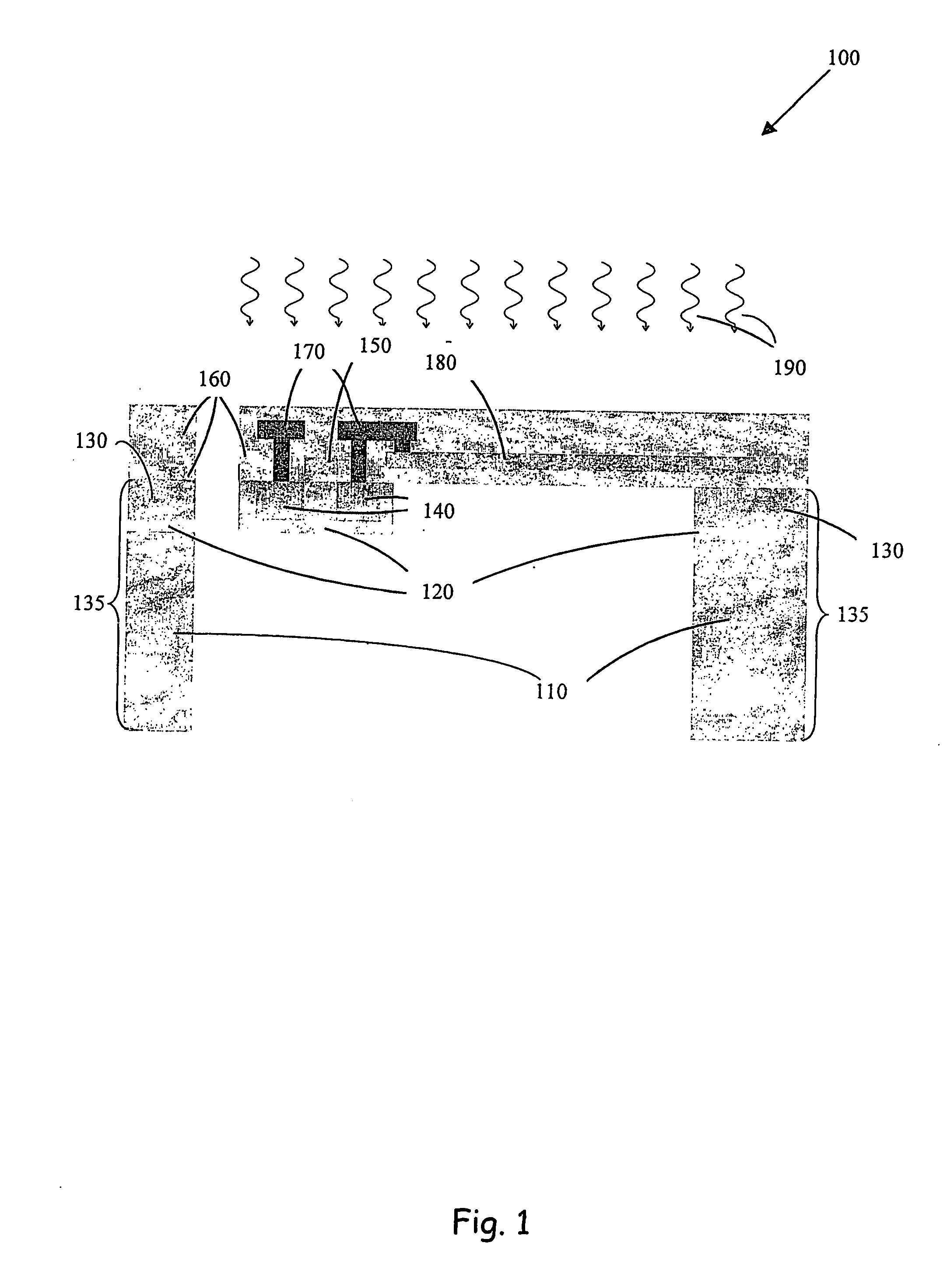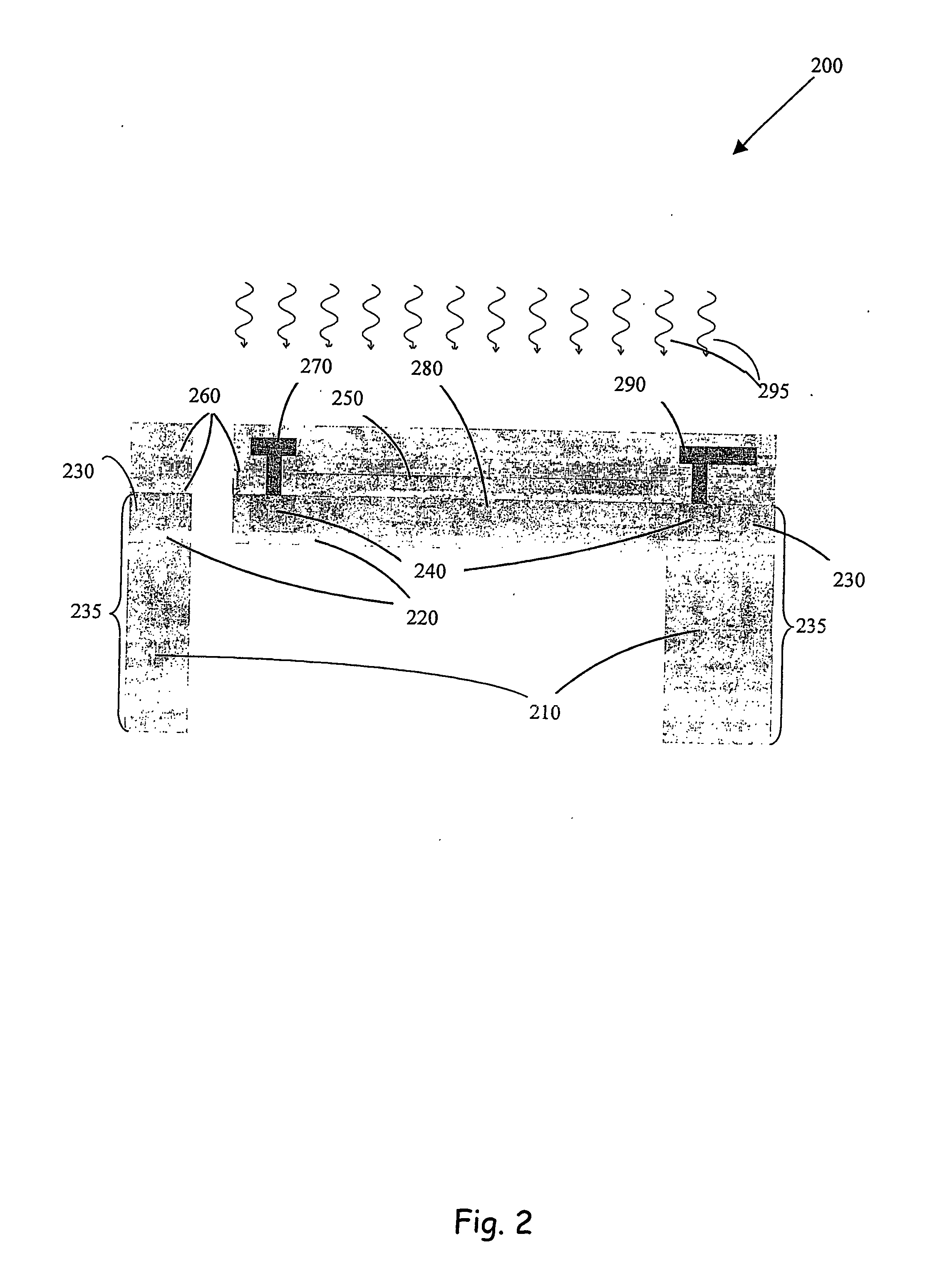Tmos-infrared uncooled sensor and focal plane array
- Summary
- Abstract
- Description
- Claims
- Application Information
AI Technical Summary
Benefits of technology
Problems solved by technology
Method used
Image
Examples
Embodiment Construction
[0027] The invention will now be described in connection with certain preferred embodiments with reference to the following illustrative figures so that it may be more fully understood. References to like numbers indicate like components in all of the figures.
[0028] The infrared uncooled sensor and focal plane array is explained, with reference to FIG. 1, illustrating a cross section of a typical sensor pixel 100 of a Thermally isolated Metal Oxide Semiconductor (TMOS) transistor on a silicon-on-insulator (SOI) substrate that responds with current, threshold voltage and gain changes to infrared radiation, constructed in accordance with the principles of the present invention.
[0029] The sensor structure is based on a single crystal silicon bulk 110, preferably micromachined using an anisotropic deep silicon reactive ion etching (DRIE). A buried thin silicon dioxide layer 120 serves as an etch stop layer for the bulk micromachining process and separates the bulk silicon from the thi...
PUM
 Login to View More
Login to View More Abstract
Description
Claims
Application Information
 Login to View More
Login to View More - R&D
- Intellectual Property
- Life Sciences
- Materials
- Tech Scout
- Unparalleled Data Quality
- Higher Quality Content
- 60% Fewer Hallucinations
Browse by: Latest US Patents, China's latest patents, Technical Efficacy Thesaurus, Application Domain, Technology Topic, Popular Technical Reports.
© 2025 PatSnap. All rights reserved.Legal|Privacy policy|Modern Slavery Act Transparency Statement|Sitemap|About US| Contact US: help@patsnap.com



